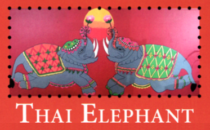Image by Jillian Mitchell
The ceremony starts with a prayer to Ganesha, the jesus of beginnings and chance additionally the cleaner of hurdles. Salutations might be offered in order for Ganesha may pave how for couples’s marriage. The gotra of both to-be-weds (going back about three years) is actually revealed. A gotra could be the ancestral lineage or even the predecessor’s earliest clan (it is not linked to status or faith). In Hindu laws, marriages should not happen around the exact same clan.
The Couple Swaps Floral Garlands While In The Jai Mala
Pic by Nicola Tonolini
The jai mala is a garland made up sugar daddy meet of strung flowers that is replaced between the newlyweds. The routine finishes with each 1 / 2 of the couple dressed in one. “To united states Hindus, the jai mala signifies the associates inviting one another within their individuals,” explains Patel. “without one, we really do not give consideration to a wedding to-be full.” During the U.S. or other fusion weddings, the ring ceremony generally observe.
The Bride Was Adorned With a Necklace Called the Mangala Sutra
Picture by Jillian Mitchell
The bride was draped in a necklace of black and gold beads by the girl newer partner. Generally, Lakshmi, the Hindu goddess of money, fortune, and success, is actually invoked inside the mangala sutra, or auspicious bond, plus the bride is considered for blessings throughout her marriage. Regional variations might also feature beads of reddish, white, or other styles.
The Bride and Groom’s Garments Tend To Be Tied Together
Picture by JAMES X SCHULZE
The saptapadi is an important routine in North Indian Hindu wedding receptions. Throughout the saptapadi, the newlyweds bring her garments tied up together—typically the bride’s veil as well as the bridegroom’s sash. In South India, the couple walks seven strategies along to indicate her friendship. In North Indian customs, they generate seven circles around a ceremonial flames, each circular signifying a particular true blessing they need for the gods. The primary importance of the saptapadi try creating friendship, which is the grounds of a Hindu matrimony.
The Newlyweds Shower Both With Rice
Picture by EDWARD WINTER FOR READYLUCK
In a-south Indian custom called the talambralu, or ritual of happiness, the couple showers one another with a combination of rice, turmeric, saffron, and also pearls. This customs represents virility, prosperity, and joy for your few’s future lifestyle along. In addition it provides a minute of levity and merriment during exactly what do normally feel a far more really serious ceremony. Sometimes, users from both sides from the household will join in on the routine by cheering the newlyweds on or physically helping them.
Red Dust Try Used On the Bride’s Hair, Signifying She’s Married
Sindoor, a red-orange dust, was put on the part of a woman’s tresses, symbolizing the girl brand new reputation as a wedded girl after the service is complete. Traditionally, this will be applied by the lady husband on wedding. All married women, as well as the bride, may put on the powder as an indication of their own marital condition. Though some opt to shade when you look at the entire the main hairline, other people is only going to wear it as a dot regarding the forehead according to personal tastes or local traditions.
The Couple’s Sendoff Try an Emotional Vidaai Ceremony
Photo by Toward Moonlight
“not absolutely all brides’ farewells end with sparklers and smiles,” states Patel. “As a Hindu bride officially will leave the lady home to starting another life together spouse, the goodbyes is heartwarming and tearful through the vidaai service. She walks aside distributing happiness and success by using handfuls of grain and coins is immediately tossed over the girl check out reveal her understanding when it comes to some time and like provided to the girl in the home of this lady mothers.” The vidaai service could be the symbolic end of the wedding celebrations, and it is characterized by the bride’s moms and dads giving a final farewell to their child.
